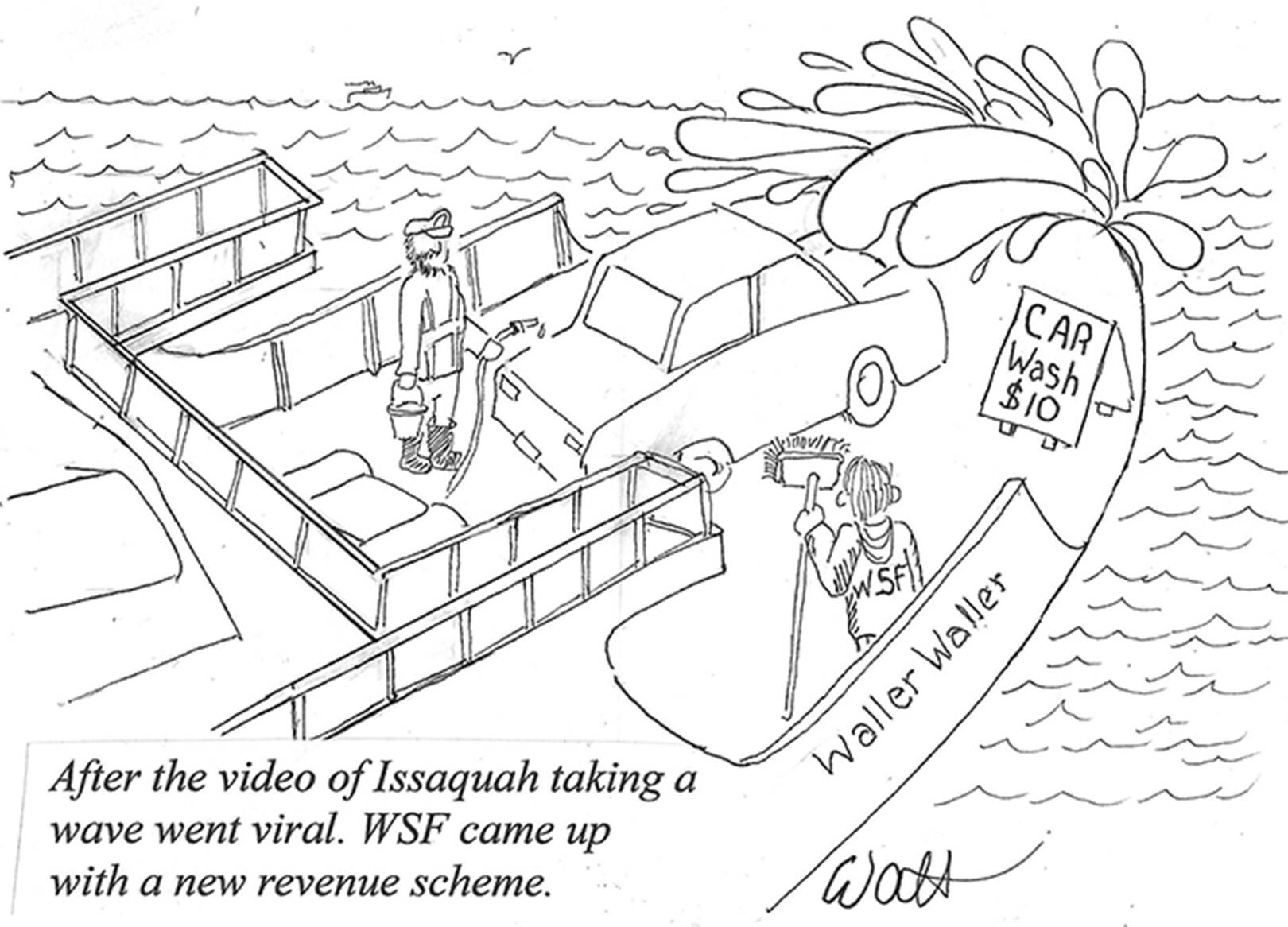About 25 Kingstonians attended each of Washington State Ferries two online public meetings. Here is a snapshot of some of the more interesting items. For a deeper dive, the recordings are on WSF’s website.
Reliability: WSF’s report of a 97.7% sailing reliability got a big what? That’s 97.7% of a schedule that’s 65% of pre-COVID sailings. Delivered sailings are 63% of the normal, full schedule. 60% of cancellations are for crew and 25% are for boats.
Crewing: Headquarters staff chirped that programs to grow new crew would solve crewing issues in 12-18 months. Experts on the deck plates say it will take longer. Many new recruits drop out after a year and experienced people are resigning and retiring. Programs to grow licensed officers are also slow and expensive. The Able-Bodied Seaman to Mate program costs $500,000 per mate and takes years. While bringing back laid-off crew and hiring experienced mariners is faster and less expensive, WSF hasn’t shown much enthusiasm for that. Crew members missing work is still a problem. Relief requests average of 130 per day while restrictions make assigning reliefs unwieldy.
Boats: Until new boats arrive the “new normal” is effectively 15 operational boats. Contracts for new Hybrid Electric Olympic Class ferries are expected by fall 2024 with an initial delivery in 2028. The HEOC design is being stretched from 144 to 160 cars as longer ships are more energy efficient than shorter ones, in this case 9%.
Service restoration: When boats and crew are available the priority will be first the Vashon-Southworth-Fauntleroy run. Then Bremerton gets a boat. After that Port Townsend. Kingston will remain with one big boat and one small boat until Bremerton gets two-boat service. Why does Vashon get four boats before Bremerton gets two? Answer: Vashon is an island serving three communities.
Sidney: Service restoration will be after 2030 if at all. When asked by the Legislature, WSF found a suitable new boat in Denmark that’s ¾ complete. It could be had for a song and be delivered in a year. As the Jones Act would limit it to Sidney runs, WSF nixed the deal. To quote Rex Lee Carlaw: “I think since the state nationalized the ferries and took over the Sidney run from Black Ball, it has a responsibility to operate the service…Just because the run crosses the (Canadian) border does not mean it is unimportant to the state’s tourism and the economic well-being of Skagit and San Juan counties.”
Fast charging: Recharging hybrid Jumbos will take 10 Megawatts. To do that, and not dim Kingston’s lights, WSF is looking at an onshore battery to level off-peak demand.
Traffic: After insisting that Kingston’s Active (ferry) Traffic Management System be run 24/7/365, even when not needed, WSF is willing to consider only Friday-Monday and holiday operations. Ferries’ problem with variable operation has been the stress on toll booth operators when turning away vehicles that hadn’t gone through the Lindvog checkpoint. Ferries nevertheless opposes Kingston’s reservations that would solve backups. They believe commuters’ uncertain return times entail more customer service work dealing with reservation changes.
Fares: We may see substantial fare increases in 2025. WSF estimates operating costs, and the Legislature decides how much it will cover. Fares make up the difference. Pre-COVID fares covered up to 75% of costs. Now that’s down to 58%. The gap for the 2025 budget is expected to grow by up to 28%. Ouch!
Ferries waggled its finger at voters over Initiative 695 which cut the Motor Vehicle Excise Tax. Blaming today’s predicaments on what happened 24 years ago doesn’t make sense. Instead, WSF should be running to save itself…like a gazelle from a cheetah.
Walt Elliott writes a column on Washington State Ferries for this newspaper.



